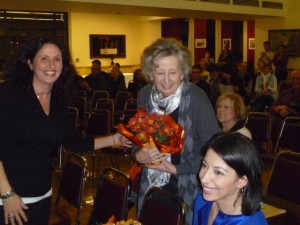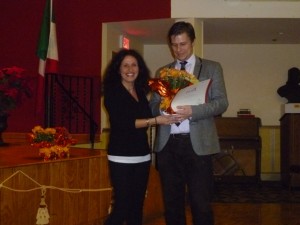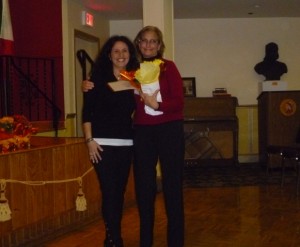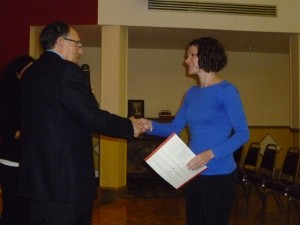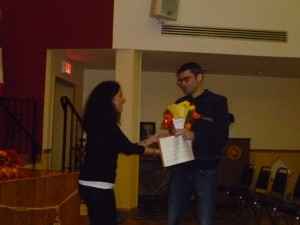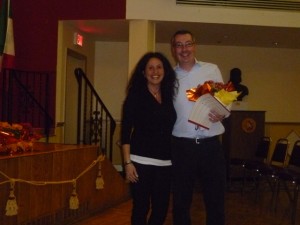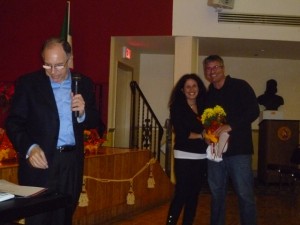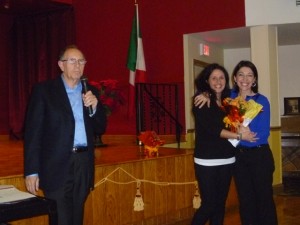In this post, since the last one, we are continuing to show you another teacher’s presentation at our school. Today, we’ll do in a short video (14 minutes) that is an example of a lesson in our Italian classes at Dante Alighieri Society of Massachusetts. Then, let Valeria leto have the floor with her teaching philosophy.
I truly believe that teaching is not about knowing a subject, instead it is more about transmitting the passion you have about a topic, giving the students the tools to achieve their goal easily and in a relaxed environment. My main goal is not to catch my students unprepared, instead it is to make them learn as much as they can. In order to do so, I assign homework daily and insist that it be handed in on time, but on the other side I praise the students when they write a good composition, or participate in class, and try hard to improve. I also believe that it is extremely important, especially for language acquisition, that the learning be based on a communicative approach. This means that, instead of learning the grammatical rules in a book, it is fundamental to reproduce real life situations in which the grammar comes out of activities such as role-plays, games, songs, movies, working in pairs and all those activities that improve the four abilities (speaking, reading, listening and writing) required for a good mastery of a language. In order to achieve this aim, I base my lessons on an innovative method of didactics known as VAKT. According to the theorists supporting this method, this learning style uses the four main sensory receivers: Visual, Auditory, Kinesthetic and Tactile to determine the dominant learning style. It is based on modalities—channels by which human expression can take place- and it is composed of a combination of perception and memory. Learners use all four modalities to receive and learn new information and experiences. This dominant style defines the best way for a person to learn new information by filtering what it is to be learned, and this may not always be the same for any task. The learner may prefer one style of learning for one task, and a combination of others for a different task. This allows all learners the opportunity to become involved, no matter what their preferred style may be.
I also believe that it is important that each student feels a part of the class and contributes to the whole group. For this reason I periodically assign to each student a task he/she will have to develop on his/her own and then present to the class. In this way each student perceives that he/she is contributing to the others. To further improve the interaction between every member of the class I use e-learning platforms that are built around that specific class needs, taking advantage of what I learnt during my Master’s degree in Technologies and Didactics of Languages. (Valeria Leto)

